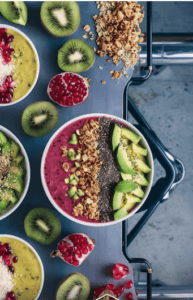One of the most important decisions you will have to make while planning an event is creating the best menu. There are several options available in catering services but preparing a menu that everyone enjoys involves more than just selecting dishes. In this article, we are going to discuss the basics of how you can compose a menu that your guests never stop sharing about.
Understanding Your Guests’ Preferences
The most important step in menu planning is knowing who will be attending. The nationality and dietary requirements of your guests or attendees also influence the choices you make with respect to food. For example, if your event site has a diverse audience with multiple cultural backgrounds then serving up a quantity of foreign cuisine can be exciting. If the restaurant is targeting mainly a local Dubai, in some cases one could serves traditional Middle Eastern dishes along with international favorites.
Key Points:
- Guest Nationality: Tailor your menu to include dishes that reflect the cultural backgrounds of your guests. For example, if you have a mix of South Asian and Western guests, consider offering a selection of both biryanis and pasta dishes.
Before we proceed , you can order online or chat with us via WhatsApp for your next catering event :


Balancing Veg and Non-Veg Options
When planning your menu, it’s essential to cater to both vegetarians and non-vegetarians. Offering a balanced selection ensures that all guests can enjoy a satisfying meal. You might include a variety of proteins such as chicken, beef, and vegetarian options like hearty salads or stuffed vegetables.
Key Points:
- Variety: Include both veg and non-veg options to accommodate all dietary preferences. For example, a menu with chicken kebabs, beef sliders, and a rich vegetarian lasagna can cater to a wide range of tastes.
Healthy Choices and Smoothies
Incorporating healthy options and fresh smoothies into your menu is a fantastic way to cater to today’s more health-conscious guests. Offering a selection of nutritious dishes can set you apart and attract a wider customer base.
You might consider adding a variety of salads with diverse, flavorful dressings—think tangy citrus vinaigrette, creamy avocado-lime, or classic balsamic. Grilled vegetables, like zucchini, bell peppers, and asparagus, can add a colorful and tasty dimension to your menu while providing a nutrient-rich alternative to heavier sides.

A smoothie bar could be a standout feature, offering options such as spinach-berry blends packed with antioxidants or tropical fruit medleys that are both refreshing and energizing. This not only broadens your menu appeal but also aligns with a growing demand for healthier dining choices.
Key Points:
- Health Focus: Add dishes like quinoa salads or grilled salmon. A smoothie station can provide a refreshing and healthy alternative to traditional sugary beverages.
Main Dishes and Sides
A well-rounded menu should feature at least four to five main dishes along with three to five side dishes. This variety ensures that there’s something for everyone. Include a mix of proteins, such as chicken and beef, and carbohydrate options like pasta or rice.
Key Points:
- Main Dishes: Offer a variety like chicken curry, beef stew, pasta primavera, and a vegetarian option like a hearty vegetable lasagna.
- Side Dishes: Complement your mains with sides such as roasted potatoes, sautéed vegetables, and a fresh garden salad.
Adding Decorative Touches
Your event’s food presentation can have a big impact. Allow the catering staff to take care of the buffet table’s décor and the meals itself. Tasteful garnishes, imaginative plating, and themed décor can enhance the eating experience.
Key Points:
- Decorations: Allow the caterer to add visual appeal with elements like edible flowers, colorful garnishes, and well-arranged platters.
Informative Food Tags
Using name tags for each dish is not just practical but also adds a touch of sophistication. Include brief descriptions of each dish, and if possible, highlight key ingredients and any potential allergens. This is particularly useful for guests with dietary restrictions or allergies.
Key Points:
- Food Tags: Clearly label each dish and include information about the main ingredients and common allergens. For example, “Chicken Alfredo (Contains Dairy, Gluten-Free Option Available).”
Beverage Station
A well-stocked beverage station is essential for any event. Include a variety of drinks such as water, soft drinks, and natural juices. Offering coffee and tea can also be a nice touch, especially for evening events or formal gatherings.
Key Points:
- Beverage Options: Set up a station with water, assorted soft drinks, natural fruit juices, and a coffee and tea bar to ensure that guests have plenty of choices.
People Also Ask
What if my event has a wide range of dietary needs?
Addressing diverse dietary needs requires careful planning. Offer a broad range of options, including vegetarian, vegan, and gluten-free choices. Clearly label dishes to help guests easily identify what suits their needs.
How can I make sure my menu is both diverse and cohesive?
Balance is key. Choose dishes that complement each other in flavor and presentation. For example, pair a rich beef stew with lighter sides like a fresh salad and roasted vegetables to create a well-rounded meal.
Is it worth investing in a professional caterer?
Yes, a professional caterer brings expertise in menu design, food preparation, and presentation. They can also handle the logistics of serving and managing dietary restrictions, ensuring a smooth and enjoyable dining experience for your guests.
Finding a professional caterer can be challenging, but we’ve got you covered. At 971Catering, we are recognized as one of the best catering services Dubai.
Crafting a menu for your next event might seem like a daunting task, but with these tips, you’re well on your way to creating a memorable dining experience that will impress your guests and make your event truly special.



